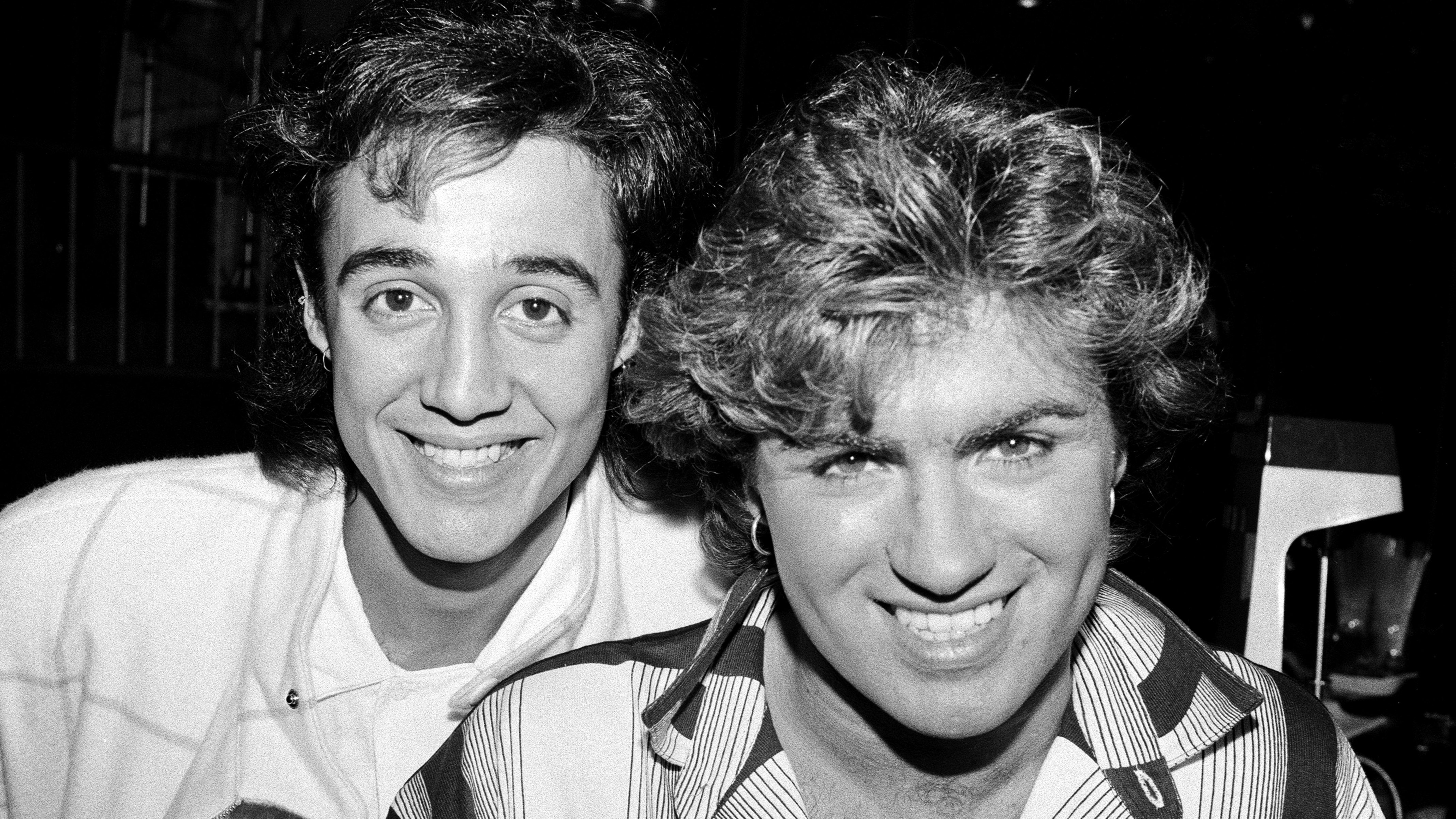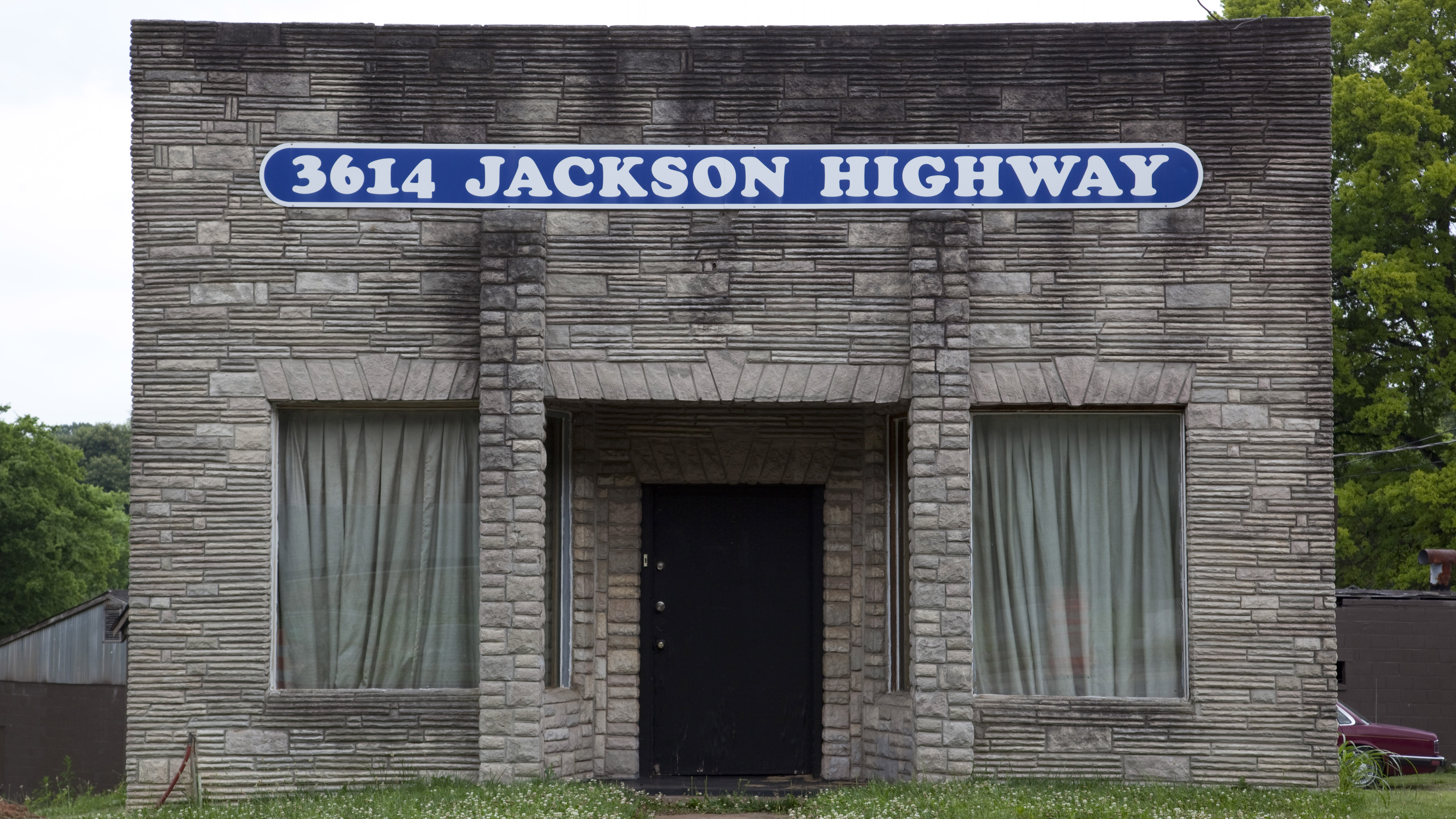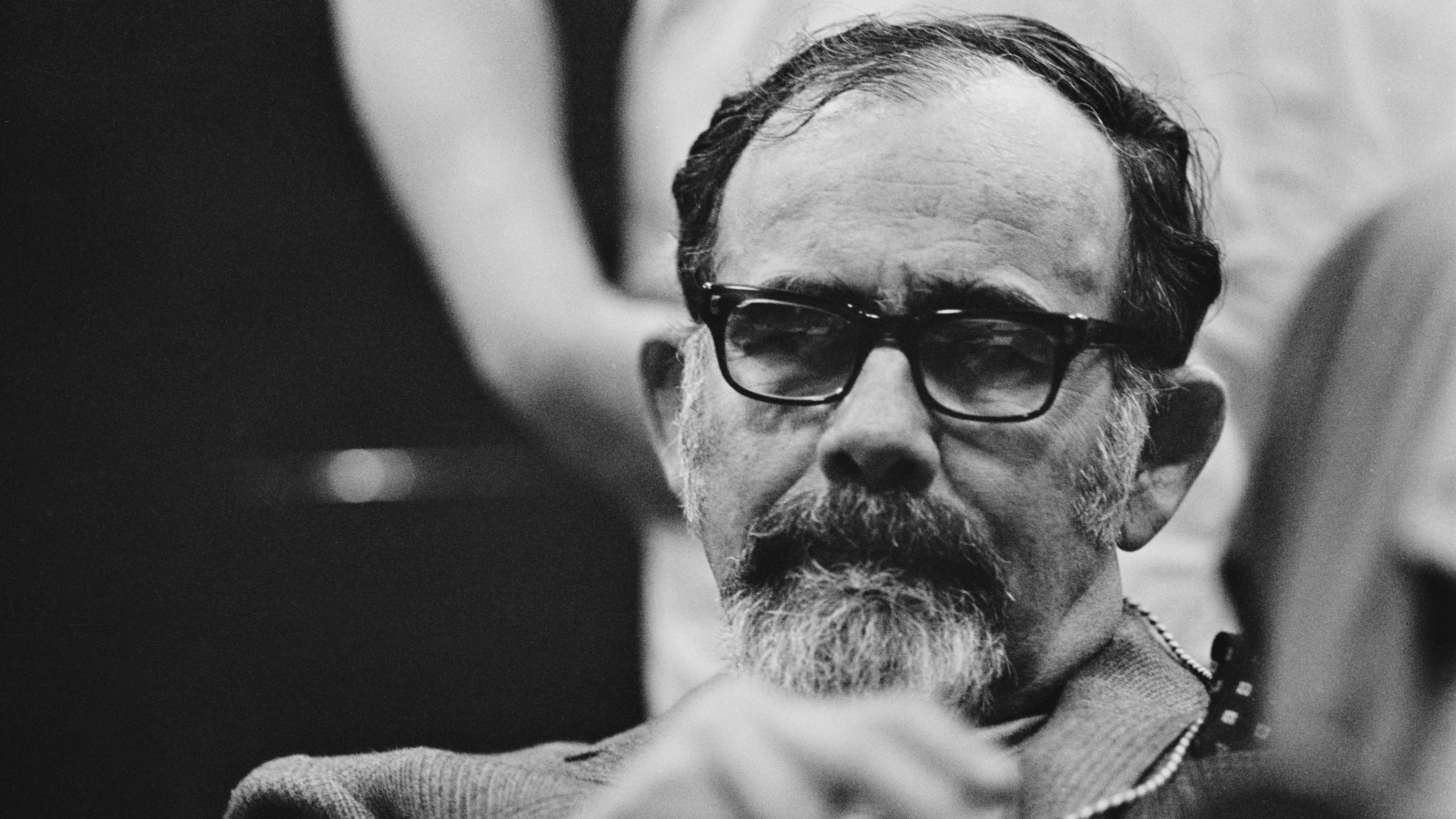11 saxophonists, 4 re-recordings and a £17,000 haircut… The tortuous tale of George Michael's Careless Whisper: "I wrote it totally in my head. I worked on it for about three months in my head"
There’s much more to the Wham!-man's modern classic than meets the ear
From its miraculous conception, multiple re-recordings, endless procession of unsuccessful sax solos and the small matter of paying £17,000 for a haircut, the saga of George Michael and Wham!’s Careless Whisper is a tall tale with a smash hit ending.
Beginning as an ode to a betrayed girlfriend, Careless Whisper, while underscoring Wham!’s output in the public consciousness, was actually among the first songs that the teenage Michael ever wrote. The story goes that, while accompanying his sisters Melanie and Yioda at the skating rink, his head was turned by a new girl on the scene, prompting him to begin dating her behind his girlfriend’s back, and soon his guilty feet had got no rhythm.
The song that tells the story appeared fully formed in the 18-year-old Michael’s brain while he was travelling to his regular DJ gig at the Bel Air restaurant near Bushey. “I remember I was handing the money over to the guy on the bus and I got the sax line: der – der – der – der… I worked on it for three months in my head.” he says in his autobiography Bare.
Meanwhile Wham! bandmate Andrew Ridgeley had been picking his way through some guitar chords on the white Fender Telecaster he’d just received for his 18th birthday. “‘What do you make of this?’ I said working through the chords,” writes Ridgely in his book Wham! George & Me.
“He looked at me, a little surprised. ‘Oh my God, Andy. That goes perfectly with an idea I’ve had going round and round in my head! Play it again… I carried on playing with Yog singing what would later become the haunting saxophone melody. Through an extraordinary coincidence our separate ideas complemented each other perfectly.”

“I feel so unsure…”
Recorded on a TEAC four-track portastudio, manned by local producer Paul Mex (for a fee of £20), the first incarnation of the future classic was spirited into being in the Ridgeley family front room in 1981. The band had spent most of the day getting Wham Rap! to sound as good as possible, thus, with minutes before the arrival of Ridgely’s mum, the pair sped through a single take of Careless Whisper to complete the session.
Realising its potential, a second demo was made the following year, on the 24th of March 1982 at Halligan Band Centre, Holloway, London, this time with a backing band and the first airing of its famous saxophone riff. All for a total fee of £200.
Get the MusicRadar Newsletter
Want all the hottest music and gear news, reviews, deals, features and more, direct to your inbox? Sign up here.
It’s a little-known fact that while always being the perfect first George Michael solo vehicle, Careless Whisper instead sat alongside an improved Wham Rap! and new song Club Tropicana on the demo tape that landed the band their first rushed record deal with local label Innervision.
But perhaps more remarkable is the fact that despite being a nailed-on hit and winning the band their contract, it didn’t even make the cut for their debut album, Fantastic, and its run of four hit singles. Instead it would have to endure being trapped in demo form – referred to as Tuneless Whisper by Michael’s teasing sisters – for two more years before getting its next iteration. And this time the band were going to Make It Big.
In July 1983, Michael travelled to Muscle Shoals Studios in Sheffield, Alabama for Careless Whisper’s third take – the first track for second Wham! LP, Make It Big – with legendary producer Jerry Wexler. And with tracks such as Aretha Franklin’s Respect, Booker T. & the MG’s, Green Onions and Wilson Pickett’s, In the Midnight Hour under his belt, what could go wrong?…
“I had the idea of using Jerry Wexler,” writes Wham! manager Simon Napier Bell in his book Ta-ra-ra-boom-de-ay. “I sent him the song and he loved it. ‘Let’s record it at Muscle Shoals,’ he suggested. With the backing track done and George’s vocal recorded,

"Jerry had booked the top sax player in LA to fly in and do the solo. He arrived at eleven and should have been gone by twelve. Instead, after two hours, he was still there while everyone in the studio shuddered with embarrassment. He just couldn’t play the opening riff the way George wanted it, the way it had been on the demo. But that had been made two years earlier by a friend of George’s who lived round the corner and played sax for fun in the pub.
"The saxophonist from LA appeared to be playing the part perfectly, but each time George told him, ‘No, it’s still not right, you see….’ and he would lower his head to the talkback microphone and patiently hum the part to him yet again. ‘It has to twitch upwards a little just there! See …? And not too much.’
"After over an hour of this, I wandered off to the studio’s poolroom and idly knocked coloured balls around the table. Then Jerry joined me. ‘What d’you think?’ I asked. ‘Is there really something George wants that’s different from what the sax player is playing?’"

There’s some tiny nuance that the sax player is somehow not getting right
Jerry Wexler
"Jerry thought so. "Definitely! I’ve seen things like this before. There’s some tiny nuance that the sax player is somehow not getting right. Although you and I can’t hear what it is, it may be the very thing that will make the record a hit. The success of pop records is so ephemeral, so unbelievably unpredictable, we just can’t take the risk of being impatient. But this sax player’s not going to get it, is he!"
“He probably played with incorrect fingering which gave it the unique feel George wanted. The American guys were just too good to get it.”
And he wasn’t the only one who was disappointed with the third Whisper.
“What was disappointing about it was not that it sounded like an old Atlantic record, but that it sounded too middle of the road,” writes Michael in his 1990 autobiography Bare. “I think Jerry Wexler is a wonderful man and I loved working with him but the version of Careless Whisper we did had more to do with the recording he was doing at the time than with their stuff that I loved. It just didn’t have any of my character on it. It took everyone back in London to convince me that it wasn’t right.”
“It had been eviscerated,” moans Ridgely in their recent Neflix doc. “It had lost all its character, its essence. It was average.’”
The experience wasn’t a complete loss however. During the sessions, Wexler advised Michael never to put a key change at the end of a song. “All it means is that you can’t think of anything else to do. It’s the oldest and worst cliché in the book,” he explained. Thus no Michael creation ever featured a key change. More Wexler advice? When asked prior to his death in 2008, what he would like on his gravestone Wexler replied “Two words: More bass.”
When he was asked what he would like on his gravestone Wexler replied “Two words: More bass.”
Nevertheless with the obvious smash hit in the can prior to the recording of Wham!’s second album, the band and their management had an important bargaining chip in their ammo to renegotiate their record deal on more favourable terms.
Using Careless they were able to secure the full backing of US giants CBS who both stepped in to prevent their old label Innervision from releasing the Wexler cut of Whisper, and bankrolling new sessions at London’s Advision Studios for George – again, solo – to create his own (fourth) version of the song.
“Though it’s easy to pretend, I know you’re not a fool…”
Speaking to American Recording and Music, Michael explains. “Eventually I just thought ‘Sod this. I’m going to go in and do it as if it had never been done before with the musicians we normally use and see what happens’.
After hiring and firing ten different sax players George eventually heard what he was looking for from number 11
Andrew Ridgely
"The track was much better because I was relaxed and I think that our usual musicians did a much better job than the Muscle Shoals section." In the same article engineer Chris Porter describes some of the gear used to get the track’s distinctive vocal sound: Neumann’s U87 and AKG’s C414 EB with the Advision’s bespoke echo plate studio reverb plus EMT 140, AMS and Lexicon 224X.
However, the song wasn’t out of the woods just yet, and once again the knotty issue of the sax solo would be its stumbling block. “After hiring and firing ten different sax players George eventually heard what he was looking for from number 11,” says Ridgely. “At last the nuanced melody that had lived inside his head for so long found expression from a saxophonist with soul and sensibility as well as virtuosity. George had recorded his first masterpiece and nobody was more pleased about it than I was.”
The man who finally nailed the part to Michael’s satisfaction was session player Steve Gregory and while Gregory quibbles with Ridgely’s remembrance as to his place in the queue – “I wasn’t the eleventh player, I was the ninth,” he says in a radio interview – he was the first to employ a little studio trickery to help make the part sing.
“I was doing a lot of session work at that time and I had a session in the afternoon and a gig in the evening. George’s secretary phoned me up about midday, she said ‘Well come whenever you can’ so by the time I got there it was getting on for midnight.
When I arrived there was another saxophone player there, who I knew quite well and he says ‘What are you doing here?’
Session player Steve Gregory
"When I arrived there was another saxophone player there, who I knew quite well and he says ‘What are you doing here?’. George hadn’t shown up and he says, ‘You can do it. I’ve had enough of this,’ and he left. So there was just me and the engineer Chris Porter there and I said ‘I’ve had a long day, can we do something? Cos I’ll be better now than I will be at three…”
“George had insisted that it was played on a tenor sax – an alto would have been easier – but my saxophone is an old Selmer from 1964 and it didn’t have that top note – it was what we call a ‘fake finger’ – so I suggested that if he took the track down by a semitone I’d have all the proper notes on my horn. So he did his calculations, he slowed the tape down and I had a go. We went into the control room and he put it back to the proper speed. And as he was playing it back George walked into the studio. He listened and he said ‘We got there!’ and he pointed at me and said ‘You were number nine!’.”
With a recording befitting the track’s brilliance now safely in the can, there was just the small matter of releasing it and dishing out credit where credit was due.
With Whisper being such a solo effort through the entirety of its third and fourth recordings (and playing such a pivotal part in launching Michael’s solo career) you’d be forgiven for thinking that it carries a solo Michael writing credit. But while Whisper features none of the Ridgely-supplied fun-loving jangle that would define their hits, it’s billed as a 50/50 George Michael/Andrew Ridgely co-creation with the pair sharing writing credits and proceeds.
It has been suggested that Ridgely’s co-writing credit was a parting gift to say sorry for jumping ship, rather than any conventional songwriting notion of sharing the heavy lifting, but this is something that Ridgely vehemently denies. “In the wake of his passing it’s been suggested that George gave me a co-writing credit as an act of generosity, the implication being that I couldn’t have helped him with the writing. That misunderstands the nature of our relationship,” he explains.
And then there’s the track’s tortuous timeline and – despite being Michael’s first solo single – its true place in the Wham! canon…
“As the music dies, something in your eyes…”
While it's by no means unusual for a band’s lead singer to fly the nest, using old bandmates as a launchpad to greater success, releasing a solo single prior to the band’s break up is – fortunately – an audience-baffling rarity.
While collective public memory has Careless Whisper down as the first solo product from the Wham!-free Michael, in actuality it’s only the second single from their second album
So while collective public memory has Careless Whisper down as the first solo product from the Wham!-free Michael, in actuality it’s only the second single from their second album (following opener Wake Me Up Before You Go Go) with Wham!-credited releases Freedom, double A-side Everything She Wants/Last Christmas AND official ‘final Wham! single’ The Edge of Heaven all carrying the Wham! brand after Careless Whisper’s arrival.
Nonetheless, the track was credited to a solo George Michael upon its single release in the UK in July of 1984, clearly signposting Michael’s exit strategy almost two full years ahead of their official parting of the ways at their Wham! The Final Wembley Stadium concert on the 28 June 1986.
Meanwhile, in the States there were even more blurred lines with Careless Whisper credited to ‘Wham! featuring George Michael’ to help shore-up the nascent Wham! brand (their US trajectory of single releases and success being about six months behind their UK stature) while simultaneously teeing up the George Michael persona for use later.
“In July 1983 Careless Whisper came out as George’s first solo record. This was the beginning of the transition from Wham! To George Michael, but he still pretended to the press it was no such thing,” says Simon Napier-Bell in his book I’m Coming To Take You To Lunch.
“Careless Whisper, he said, was only being issued as a solo record because it ‘didn’t fit’ with the style of Wham!… Then he spoilt it by telling them, ‘Well, perhaps it is a sort of a spring-board for me.’ He was testing the waters; edging things towards the result he wanted.
“He’d already told me to take him seriously about an eventual break-up. With Careless Whisper he was telling Andrew too.”
And with a release strategy and secret future solo plans in the hatchery (and the small matter of finally having a track that hit all the buttons) it was time to make sure that Whisper looked as good as it sounds. Even if that means paying £17,000 for a haircut…
Filming for the Careless Whisper video had taken place in Miami’s Coconut Grove, around the many hotels and marinas with – of course – a sequence of highly necessary shots involving a speedboat. Simon Napier-Bell tells the story of pop’s most famous chop.
Having his hair cut and the filming redone would add almost fifty percent to the total budget of the video
“George came back from his boat trip, happy with the day’s filming. But the next morning when he looked at the rushes he flipped. ‘It’s my hair. It’s dreadful. Too long. Too posey. Too poofy. Having his hair cut and the filming redone would add almost fifty percent to the total budget of the video but his sister Melanie was flown out to cut it and the next morning – with his hair restyled and the speedboat re-rented – the first day’s filming was reshot.”
The story made the UK tabloids with the video’s £17,000 overspend (on a budget of £30,000) being roundly credited to George’s maniacal mane management.
Follicle foibles aside, the publicity certainly didn’t hurt. Careless Whisper was finally released as a single on the 23rd of July 1984, entering the UK Singles Chart at number 12 and two weeks later it sat at the summit of mount pop – ending Frankie Goes To Hollywood’s nine-week run for Two Tribes. The track remained in the number one slot for three weeks and would go on to become the fifth best-selling single of 1984 in the UK.
It would also top the charts in 25 countries including a three-week run as number one in the States, becoming Billboard’s number one song of the year.
Daniel Griffiths is a veteran journalist who has worked on some of the biggest entertainment, tech and home brands in the world. He's interviewed countless big names, and covered countless new releases in the fields of music, videogames, movies, tech, gadgets, home improvement, self build, interiors and garden design. He’s the ex-Editor of Future Music and ex-Group Editor-in-Chief of Electronic Musician, Guitarist, Guitar World, Computer Music and more. He renovates property and writes for MusicRadar.com.
Brace yourself: Bryan Adams didn’t buy his first real six-string in a five and dime
“Nobody listens to one genre. I literally don’t know anybody who listens to one genre. You can be a fan of so many different artists at once”: Laufey on what Gen Z can teach the rest of us about how to appreciate music










